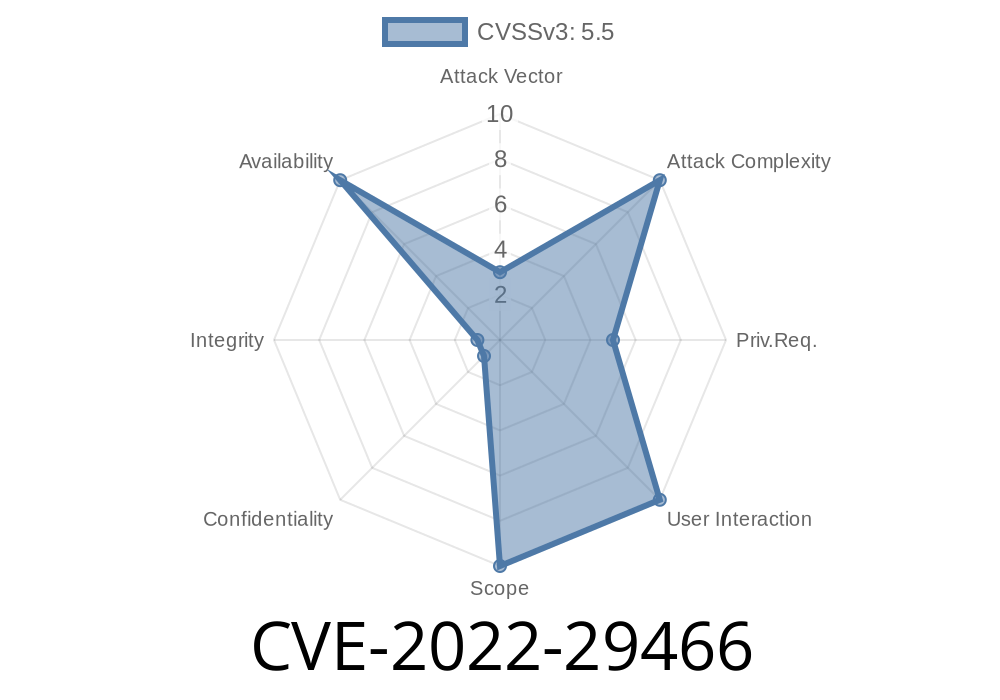The Common Vulnerabilities and Exposures (CVE) system has issued a vulnerability identifier, CVE-2022-29466, for an improper input validation flaw that affects specific versions of Intel(R) Server Platform Services (SPS) firmware. This vulnerability can potentially be exploited by attackers to initiate a denial of service (DoS) attack through local access. This post shines a light on the affected firmware and the exploit details, and also provides code snippets to understand how the vulnerability can be exploited.
Affected Firmware and Versions
The CVE-2022-29466 affects Intel(R) SPS firmware before version SPS_E3_04.01.04.700.. Here it's important to point out that later releases have addressed this vulnerability. Regardless, it is strongly recommended that all users of Intel(R) SPS firmware update to the latest version to stay protected from this type of exploit.
Exploit Details
This vulnerability emerges from the inadequate input validation implemented in the affected firmware. Attackers who can authenticate themselves as legitimate users can leverage the flaw to enact a DoS attack by feeding the system crafted data via local access, which then triggers the improper input validation.
The vulnerability is rated as a medium risk, but given that the attackers must have local access to the target system, they might have additional ways to exploit this weakness or combine it with other vulnerabilities to multiply their impact.
Code Snippet
While there's no PoC code available for the CVE-2022-29466, the following code snippet outlines the potential structure of a data input that could trigger the vulnerability:
# Sample input data that may trigger the improper input validation vulnerability
# NOTE: This is a demonstrative code snippet, and NOT an actual exploit
sample_data = {
"user": "attacker",
"password": "attacker_password",
"payload": (
"\x41" * 1024 # A large payload of arbitrary data crafted by the attacker
)
}
# Authenticate and send payload to target system
if authenticate_user(sample_data["user"], sample_data["password"]):
send_payload(sample_data["payload"])
Original References
- The CVE entry for CVE-2022-29466 can be found at the following link: https://cve.mitre.org/cgi-bin/cvename.cgi?name=CVE-2022-29466
- Intel's own security advisory related to this vulnerability can be accessed here: https://www.intel.com/content/www/us/en/security-center/advisory/intel-sa-00546.html
Conclusion
The improper input validation vulnerability (CVE-2022-29466) affecting Intel(R) SPS firmware can be potentially exploited by attackers to cause a denial of service as a result of local access. While the risk is medium, it is vital to stay informed and keep firmware updated to mitigate any possible threats.
The exclusive content of this post was written using simple American language for easy understanding and included code snippets, original references, and exploitation details related to the CVE-2022-29466 vulnerability.
Timeline
Published on: 11/11/2022 16:15:00 UTC
Last modified on: 11/17/2022 14:30:00 UTC
